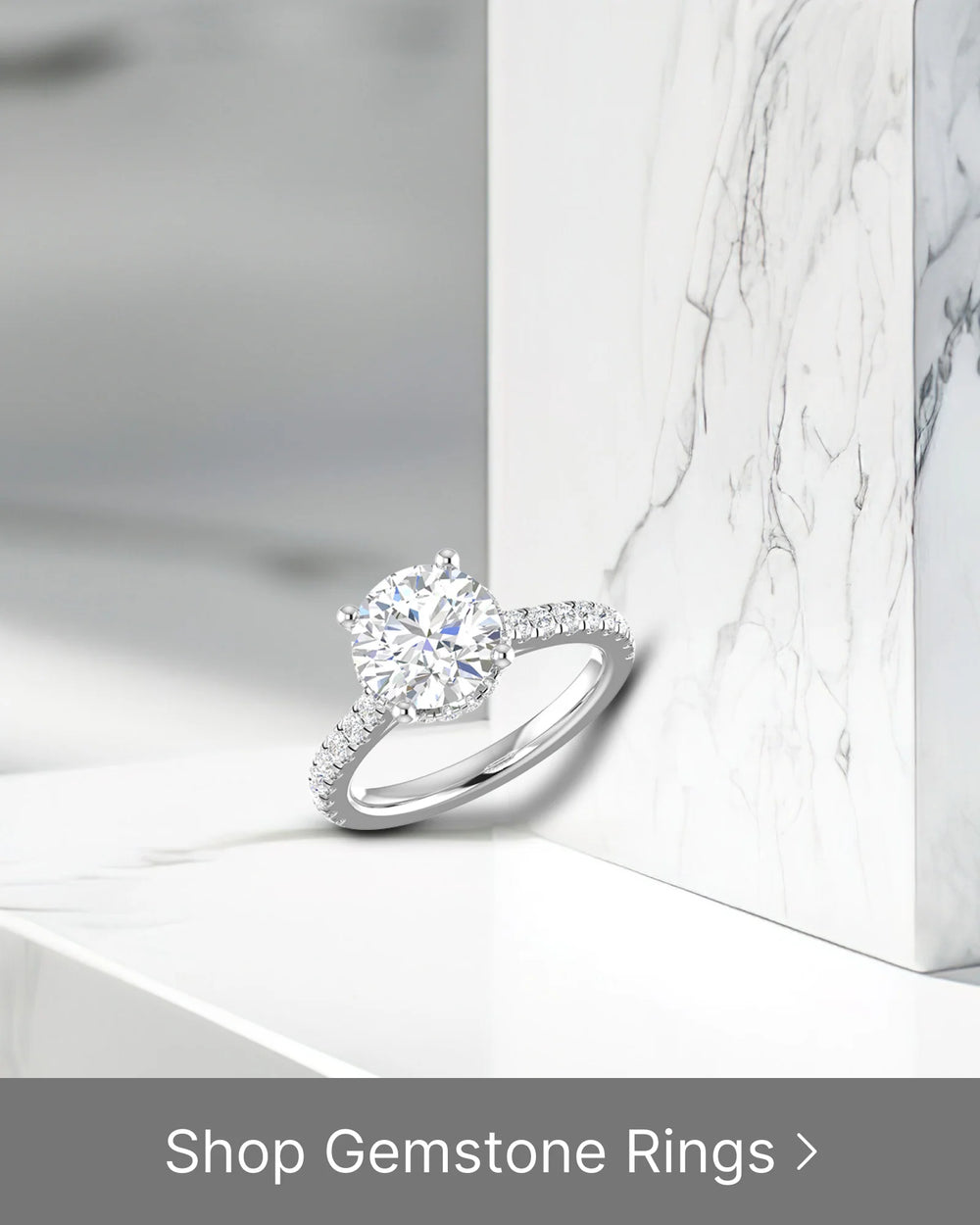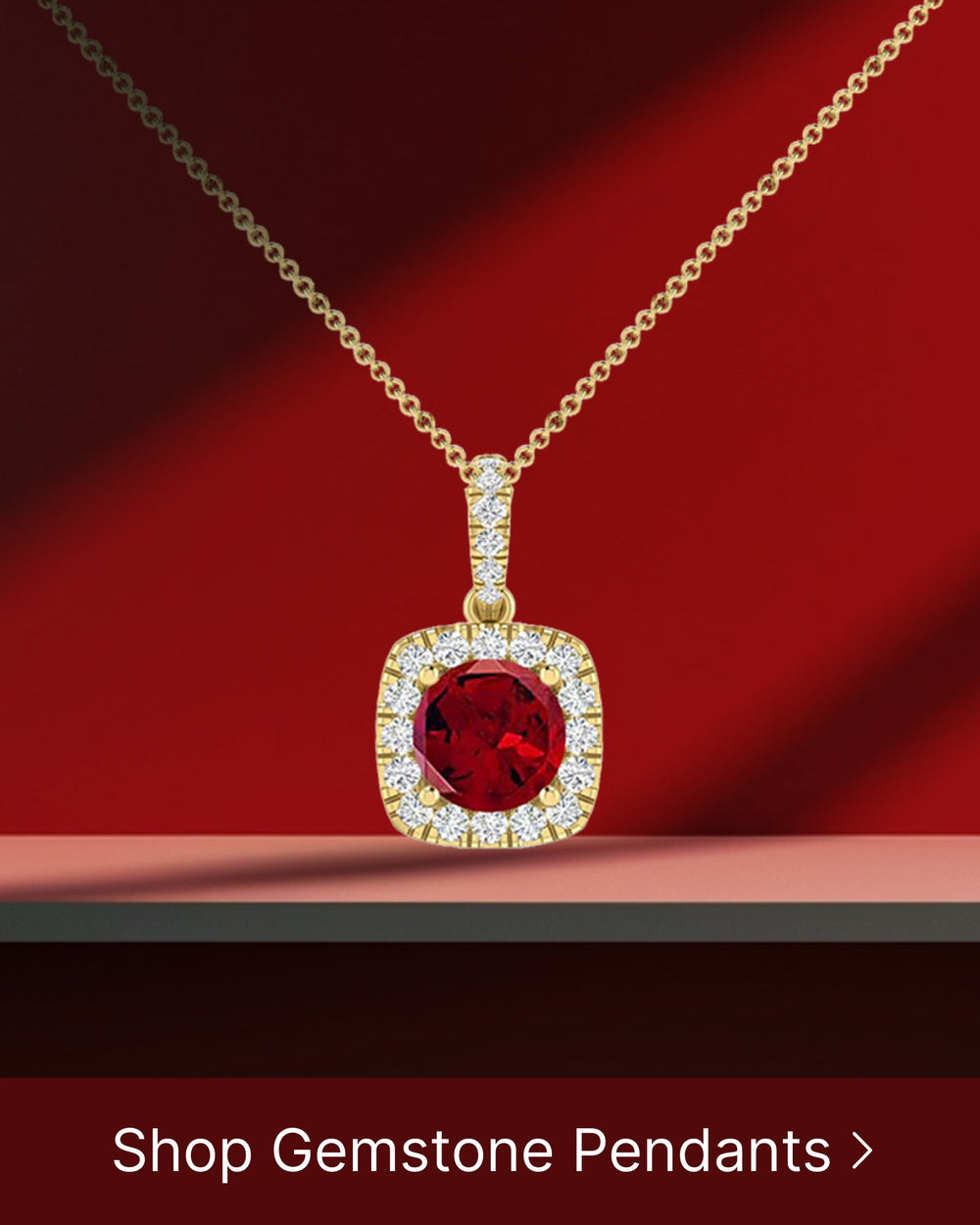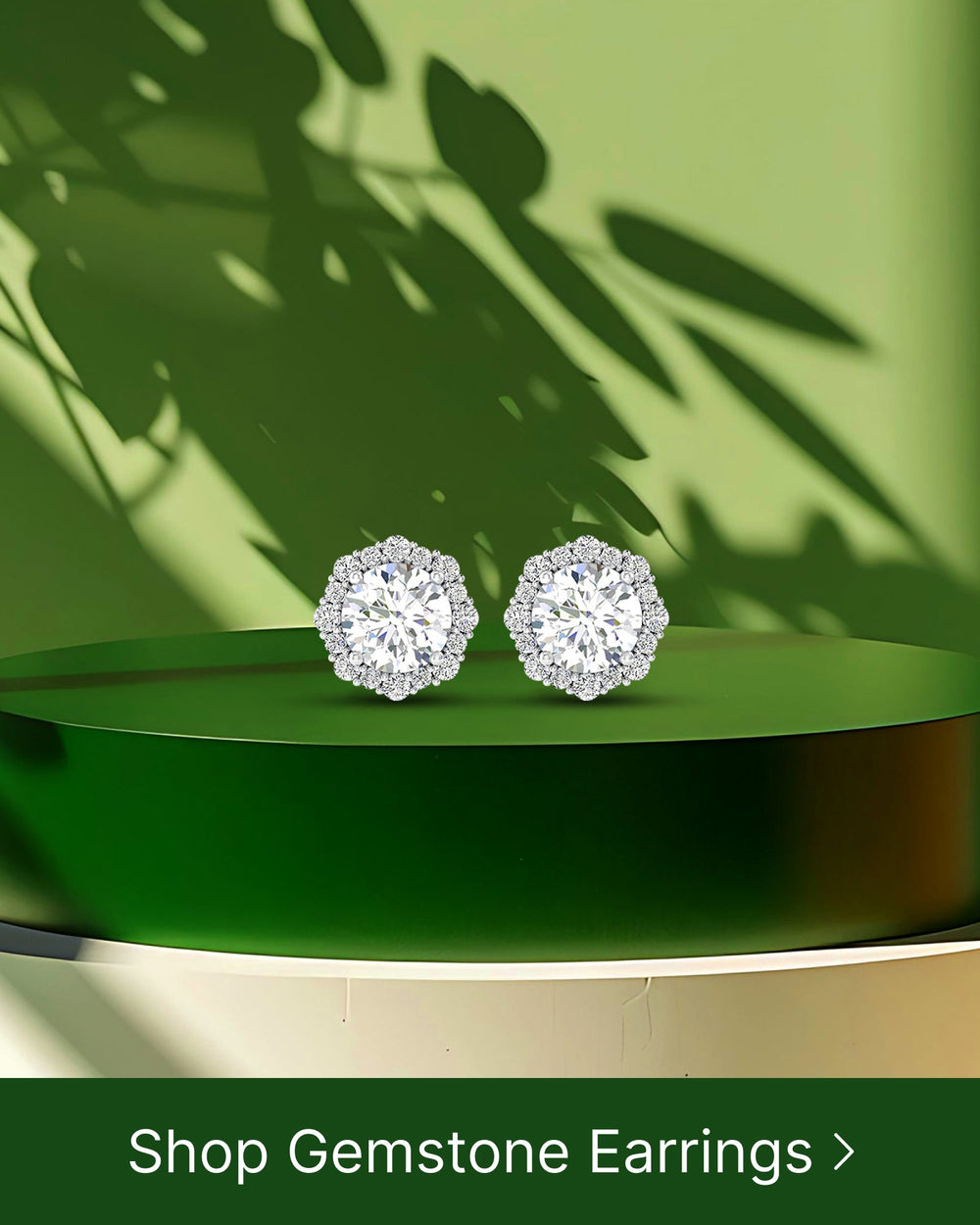Gemstones are exquisite and captivating, and one of the factors that greatly enhance their beauty is the cut. The cut of a gemstone determines its shape, proportions, and facets, which ultimately affect how light interacts with the stone. In this guide, we will explore the different aspects of gemstone cuts, from their significance to the various types available. Whether you're a gem lover, a collector, or simply curious about these dazzling treasures, this guide will provide you with valuable insights into the world of gemstone cuts.
Understanding Gemstone Cuts
Gemstone cuts play a crucial role in showcasing a stone's brilliance and fire. A well-cut gemstone reflects and refracts light in a way that maximizes its beauty, making it irresistible to the beholder. But why is the cut so important? Let's delve deeper into its significance.
When a gemstone is cut with precision, it allows light to enter and bounce back out, creating a mesmerizing display of colors and sparkle. The cut determines how well the stone interacts with light, and a carefully crafted cut can transform an ordinary gemstone into an extraordinary one. In essence, it is the cut that brings a gemstone to life.
Furthermore, the cut of a gemstone not only affects its visual appeal but also its durability. A well-cut gemstone will have proper proportions and facets that enhance its structural integrity. This means that a gemstone with a good cut is less likely to chip or break, making it more suitable for everyday wear.
The Importance of Gemstone Cuts
Each gemstone cut has its own unique characteristics and qualities. For instance, the classic round cut is known for its timeless elegance and maximum light reflection. Its symmetrical shape and numerous facets allow light to bounce off the stone from multiple angles, creating a dazzling display of brilliance.
On the other hand, princess cut gemstones feature a square or rectangular shape and exhibit exceptional brilliance. The precise cut of this shape maximizes the stone's ability to reflect light, resulting in a stunning display of sparkle. The princess cut is often favored for engagement rings and other jewelry pieces that require a touch of modern sophistication.
Another popular cut is the emerald cut, which highlights the stone's clarity and exhibits a sophisticated and vintage appeal. This cut features long, rectangular facets that create a hall-of-mirrors effect, giving the gemstone a unique and captivating appearance. The emerald cut is often seen in engagement rings, as it complements both contemporary and vintage-inspired designs.
Different Types of Gemstone Cuts
Gemstones come in a variety of cuts, each with its own unique allure. In addition to the round, princess, and emerald cuts, there are many other cuts to explore.
The cushion cut, for example, combines the elegance of a square shape with rounded corners, creating a soft and romantic look. This cut is often used for colored gemstones, as it enhances their natural beauty and allows for a larger display of color.
The marquise cut, with its elongated shape and pointed ends, is known for its dramatic and elongating effect on the finger. This cut is often used to create statement pieces and is favored by those who seek a bold and eye-catching look.
Other popular gemstone cuts include the oval cut, pear cut, and radiant cut, each offering its own unique blend of brilliance and style. Exploring these different cuts allows you to discover the perfect gemstone that matches your personal taste and preferences.
How Gemstone Cuts Affect Value
It is worth noting that the cut of a gemstone significantly impacts its value. A well-cut gemstone with symmetrical facets and precise proportions will be more valuable than one with an inferior cut. The better the cut, the more captivating the gemstone will appear, making it highly sought after in the market.
In addition to the visual appeal, a well-cut gemstone also exhibits better light performance. It will reflect and refract light in a way that maximizes its brilliance and fire, creating a captivating display that draws attention. This exceptional light performance adds to the gemstone's desirability and, consequently, its value.
When evaluating the worth of a gemstone, experts consider the cut as one of the four Cs, along with color, clarity, and carat weight. These factors work together to determine the overall quality and value of a gemstone. Therefore, a gemstone's cut should always be a crucial consideration when assessing its worth.
The Process of Cutting Gemstones
Ever wondered how gemstones are transformed from raw materials into their dazzling final forms? The process of cutting gemstones involves a series of intricate steps and the use of specialized tools.
When it comes to gemstone cutting, it is not just a simple task of shaping and polishing. It is a delicate art that requires a deep understanding of the gemstone's properties and a keen eye for detail. Let's delve deeper into the world of gemstone cutting and explore the tools, steps, and challenges involved.
Tools Used in Gemstone Cutting
Gemstone cutting requires the use of various tools. Some of the common tools include faceting machines, which enable gem cutters to shape the stones and create facets. These machines are equipped with diamond-coated laps that grind away excess material, revealing the gemstone's hidden beauty.
But the journey doesn't end there. Diamond saws are used to cut the rough gemstone into manageable pieces. These saws, with their sharp blades, make precise cuts, ensuring that the gemstone is ready for the next stage of the cutting process.
Shaping and polishing are done using diamond wheels and laps. These tools, with their abrasive surfaces, gradually refine the gemstone's shape and bring out its luster. Skilled gem cutters meticulously work with these tools, carefully crafting each facet to perfection.
It is important to note that gemstone cutting is not solely reliant on tools. Skilled craftsmanship plays a vital role in the process. The expertise and experience of the gem cutter are crucial in determining the final outcome of the gemstone.
Steps in Cutting a Gemstone
The cutting process begins by carefully assessing the rough gemstone for its potential and determining the most suitable shape and style. Gem cutters examine the stone's color, clarity, and natural inclusions to make informed decisions about its transformation.
Once the outlines are marked, the gem cutter begins shaping the stone by gradually grinding away excess material. This stage requires meticulous precision to ensure that the facets are symmetrical and aligned correctly. Each facet must be carefully crafted to reflect and refract light in the most captivating way.
As the gemstone takes shape, the gem cutter constantly evaluates its progress, making adjustments as needed. The goal is to create a gemstone that not only showcases its natural beauty but also maximizes its brilliance and fire.
Finally, the gemstone is polished to perfection, revealing its true brilliance. The gem cutter uses various polishing techniques, including using diamond powder and polishing compounds, to achieve a mirror-like finish. This last step brings the gemstone to life, allowing its inner radiance to shine through.
Challenges in Gemstone Cutting
Gemstone cutting is an art that requires both technical expertise and artistic vision. The process can be highly challenging, as gem cutters must work with precision while also considering the stone's unique characteristics, such as its hardness and crystal structure.
Each gem species presents its own set of challenges. For example, cutting a diamond requires careful planning and execution due to its exceptional hardness. On the other hand, cutting a softer gemstone like opal requires a delicate touch to avoid damaging its delicate structure.
Furthermore, gem cutters must also consider the gemstone's color and clarity. They need to make strategic decisions on how to cut the stone to enhance its natural beauty and minimize any imperfections.
Throughout the cutting process, gem cutters face numerous obstacles and make countless decisions. Their expertise and attention to detail are what make each gemstone a unique work of art.
So, the next time you admire a dazzling gemstone, take a moment to appreciate the intricate process it went through. From rough to radiant, gemstone cutting is a labor of love that transforms nature's treasures into breathtaking masterpieces.
Popular Gemstone Cuts and Their Characteristics
Now that we have explored the importance of gemstone cuts and the cutting process, let's dive into some of the most popular gemstone cuts and their distinctive characteristics.
Round Cut Gemstones
The round cut is a timeless classic. With its symmetrical shape and numerous facets, a round cut gemstone captures light brilliantly, resulting in exceptional sparkle. Round cut gemstones are versatile and perfectly suited for various jewelry designs, making them a popular choice among gem enthusiasts.
Princess Cut Gemstones
The princess cut is renowned for its square or rectangular shape. This cut showcases the stone's exceptional brilliance and fire, making it a favorite for engagement rings and other prominent jewelry pieces. Princess cut gemstones radiate a contemporary and elegant appeal, adding a touch of sophistication to any ensemble.
Emerald Cut Gemstones
The emerald cut is characterized by its rectangular shape and step-like facets. This cut emphasizes the clarity of the gemstone, creating a sleek and chic appearance. Emerald cut gemstones exude a vintage charm and are often chosen for statement rings and necklaces, offering a touch of old-world glamour.
Choosing the Right Cut for Your Gemstone
Now that we have explored the different gemstone cuts and their characteristics, how do you go about selecting the perfect cut for your gemstone?
Factors to Consider When Choosing a Cut
When choosing a gemstone cut, several factors come into play. Consider the stone's shape, color, and size. Some cuts, like the round cut, are more forgiving of color variations, while others, such as the emerald cut, highlight color and clarity. Think about the type of jewelry you plan to create or the setting in which you want the gemstone to be showcased. Ultimately, choose a cut that enhances the stone's natural beauty and complements your personal style.
Matching Gemstone Cut to Jewelry Type
Different jewelry types lend themselves better to specific cuts. For example, round cut gemstones are versatile and work well in various jewelry designs. Princess cut gemstones are often used in engagement rings, while emerald cut gemstones are frequently chosen for elegant necklaces or statement rings. Consider the intended jewelry piece and how the cut will harmonize with its style and purpose.
As you embark on your journey into the world of gemstone cuts, remember that each cut has its own unique charm and beauty. By understanding the significance of gemstone cuts, the cutting process, and the different types available, you will be equipped with the knowledge to appreciate these mesmerizing treasures even more. So whether you're an avid gem collector, a jewelry enthusiast, or simply captivated by the allure of gemstones, let the ultimate gemstone cut guide be your compass as you navigate through the mesmerizing world of gemstone cuts.





